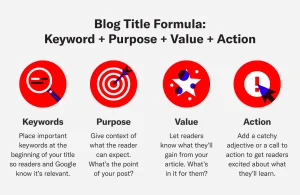
SEO for E-commerce: Strategies to Increase Online Sales
In the competitive world of e-commerce, optimizing your website for search engines is crucial for driving traffic and increasing sales. For creative brand companies like Flykez CO in Serbia, implementing effective SEO strategies can make a significant difference in your online success. This article explores essential SEO techniques tailored for e-commerce businesses to boost their online presence and sales.
Understanding E-commerce SEO
E-commerce SEO involves optimizing your online store to rank higher in search engine results pages (SERPs). It encompasses various tactics, including keyword optimization, site structure improvements, content creation, and link building. Here are some key strategies to enhance your e-commerce SEO.

1. Conduct Comprehensive Keyword Research
Effective keyword research is the foundation of any successful SEO strategy. Identify keywords that your target audience uses to search for products or services. Use tools like Google Keyword Planner, Ahrefs, and SEMrush to find high-volume, low-competition keywords relevant to your products.
Focus Keywords:
- SEO Trends 2024
- E-commerce SEO
- Local SEO
- Advanced SEM Strategies
Incorporate long-tail keywords that capture more specific search intents, such as “best organic skincare products in Serbia” or “affordable designer handbags online.”
2. Optimize Product Pages
Product pages are the heart of your e-commerce site. Optimize each product page with unique, high-quality content. Ensure that your titles, descriptions, and meta tags are optimized with relevant keywords. Use clear and compelling product descriptions that highlight key features and benefits.
Example:
- Title: “Eco-Friendly Bamboo Toothbrush – Sustainable Oral Care”
- Meta Description: “Discover our eco-friendly bamboo toothbrush. Made from sustainable materials, it’s perfect for a greener lifestyle. Shop now for a healthier planet.”
Include high-quality images with descriptive alt text, and if possible, add product videos to enhance user engagement.
3. Improve Site Structure and Navigation
A well-structured website improves user experience and helps search engines crawl your site more effectively. Organize your products into clear categories and subcategories. Use breadcrumb navigation to make it easy for users and search engines to navigate through your site.
Ensure your site is mobile-friendly, as a significant portion of online shopping is done on mobile devices. Use responsive design to provide a seamless experience across all devices.

4. Enhance Page Load Speed
Page load speed is a critical ranking factor for search engines. Slow-loading pages can increase bounce rates and negatively impact user experience. Use tools like Google PageSpeed Insights to analyze and improve your site’s load time. Compress images, leverage browser caching, and minimize JavaScript and CSS to enhance speed. Also Read About Crafting SEO Friendly Blog Posts-Essential Tips for Success
5. Implement Local SEO
For e-commerce businesses targeting a local audience, local SEO is essential. Optimize your site for local search by including location-specific keywords in your content. Create and verify your Google My Business listing, and ensure your name, address, and phone number (NAP) are consistent across all online directories.
Encourage customers to leave reviews on Google and other review platforms, as positive reviews can boost your local search rankings.
6. Leverage User-Generated Content
User-generated content (UGC), such as reviews and testimonials, can significantly enhance your SEO efforts. Encourage customers to leave reviews and ratings for your products. Feature UGC prominently on your product pages to build trust and provide fresh content for search engines to index.
7. Create High-Quality Blog Content
A blog is a powerful tool for driving traffic and improving SEO. Create valuable, informative content that addresses common questions and concerns related to your products. Use focus keywords like “SEO Trends 2024,” “Voice Search SEO,” and “Social Media SEO” to attract organic traffic.

Example Blog Topics:
- “Top SEO Trends for E-commerce in 2024”
- “How to Optimize Your Online Store for Voice Search”
- “The Impact of Social Media on E-commerce SEO”
Regularly update your blog with new posts to keep your audience engaged and improve your search engine rankings.
8. Build High-Quality Backlinks
Backlinks from reputable sites signal to search engines that your site is trustworthy and authoritative. Develop a backlink strategy by reaching out to industry influencers, bloggers, and news sites. Guest posting on relevant blogs and participating in industry forums can also help build high-quality backlinks.
9. Optimize for Voice Search
With the rise of voice-activated devices, optimizing for voice search is becoming increasingly important. Voice search queries are often longer and more conversational. Incorporate natural language and long-tail keywords into your content to capture voice search traffic.
Example:
- Traditional Keyword: “buy eco-friendly toothbrush”
- Voice Search Keyword: “where can I buy an eco-friendly toothbrush near me?”
10. Monitor and Analyze Performance
Regularly monitor your SEO performance using tools like Google Analytics and Google Search Console. Track key metrics such as organic traffic, bounce rates, and conversion rates. Use this data to refine your SEO strategy and make informed decisions.
Conclusion
Implementing effective SEO strategies is crucial for increasing online sales and staying competitive in the e-commerce market. By focusing on comprehensive keyword research, optimizing product pages, enhancing site structure, and leveraging local SEO, Flykez CO can significantly boost its online presence and drive more traffic to its website.
For more insights on how Flykez CO can help you with your digital marketing needs, visit www.flykez.com
